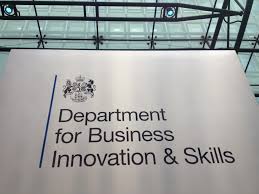Posted on 21st March 2016
Category: News
The purpose of the apprenticeship levy is to fund an increase in the number and quality of apprenticeships.
The government announced the levy in the Summer Budget 2015. In the 2015 Autumn Statement the government provided details of who it would apply to and how much the rate would be. The Government held a public consultation on how the levy should work in practice. Legislation will be introduced in 2016 to create the apprenticeship levy through the Finance and Enterprise Bills.
The apprenticeship levy will be introduced in April 2017.
The levy will apply to all UK employers in both the private and public sectors.
It is payable on annual pay bills of more than £3 million. Employers with an annual pay bill of less than £3 million will not pay the levy. These employers will continue to have access to government funding to support apprenticeships. In June 2016 we will provide further details of what that support is expected to be.
The levy will be charged at a rate of 0.5% of an employer’s pay bill. Levy payments will be collected monthly by HM Revenue and Customs (HMRC) through Pay as You Earn (PAYE), payable alongside tax and National Insurance. Pay bill will be based on total employee earnings subject to Class 1 secondary National Insurance Contributions (NICs).
There will be a £15,000 fixed annual allowance for employers to offset against their levy payment. A connected person rule, similar to the one used for the Employment Allowance, will mean that employers who operated multiple payrolls will only be able to claim one allowance for the levy.
Example 1:
Employer of 250 employees, each with a gross salary of £20,000 would pay:
- Pay bill: 250 x £20,000 = £5,000,000
- Levy sum: 0.5% x £5,000,000 = £25,000
- Allowance: £25,000 – £15,000 = £10,000 annual levy payment
Example 2:
Employer of 100 employees, each with a gross salary of £20,000 would pay:
- Pay bill: 100 x £20,000 = £2,000,000
- Levy sum: 0.5% x £2,000,000 = £10,000
- Allowance: £10,000 – £15,000 = £0 annual levy payment
The money will be collected by HMRC. Individual employers’ funding for apprenticeship training in England will then be made available to them via a new Digital Apprenticeship Service (DAS) account. Employers will be able to use this to pay for training for apprentices.
Employers will be able to use their funding (up to a cap which will depend upon the standard or framework that is being trained against) to cover the costs of an apprentice’s training, including English and maths, assessment and certification.
